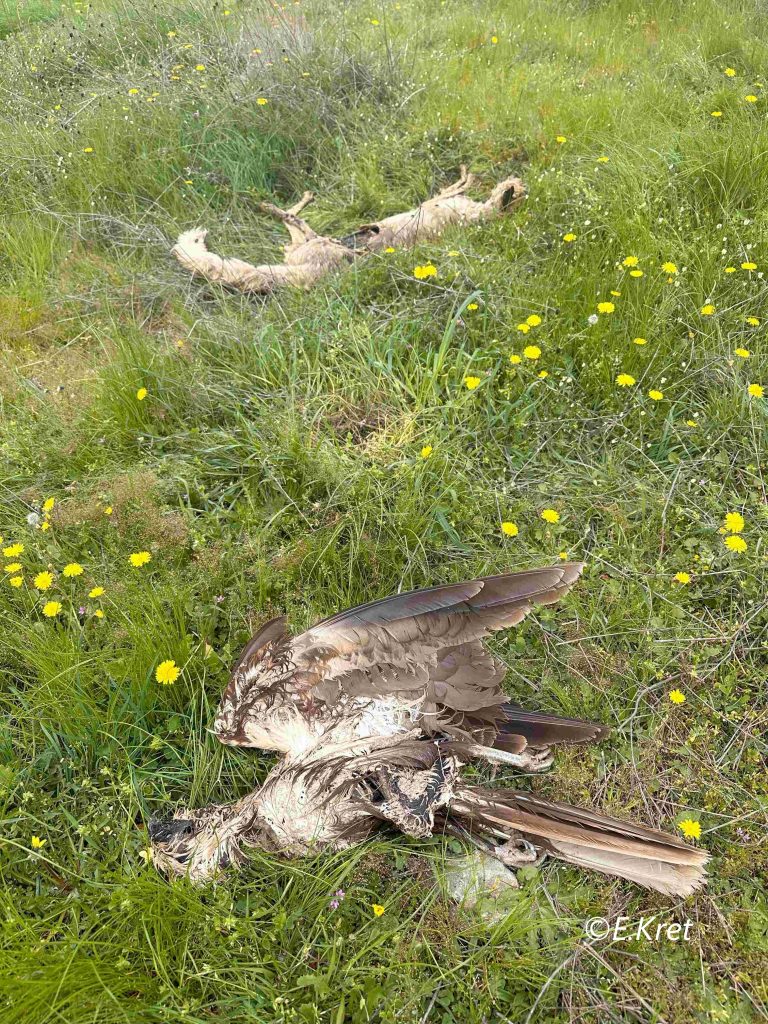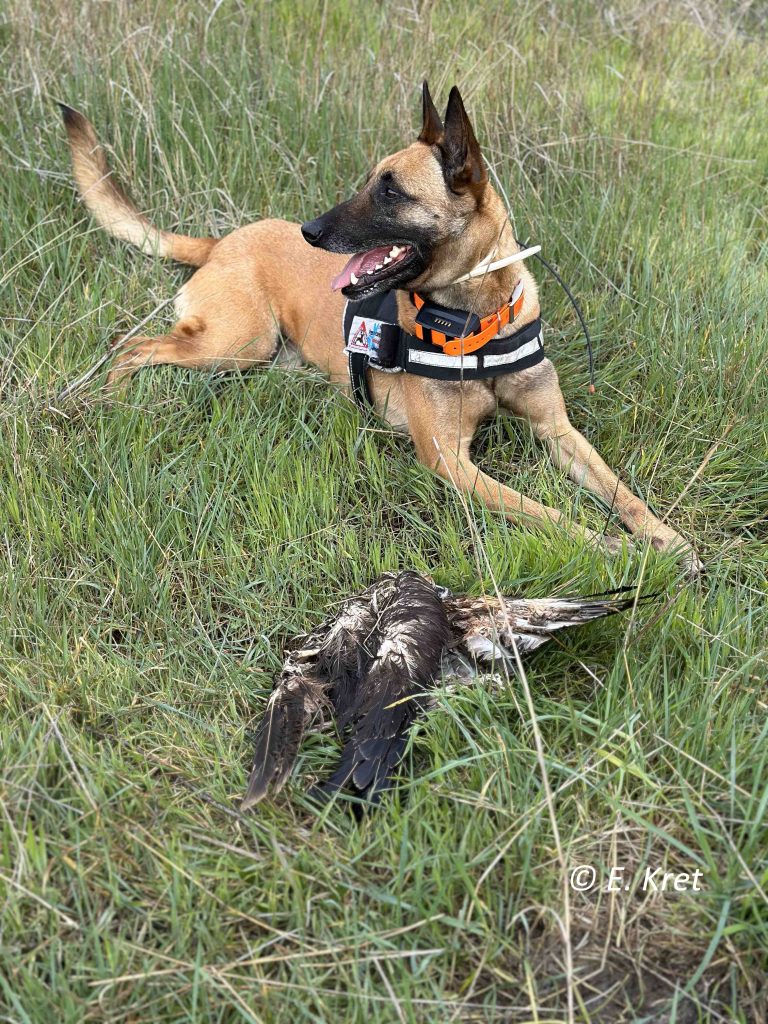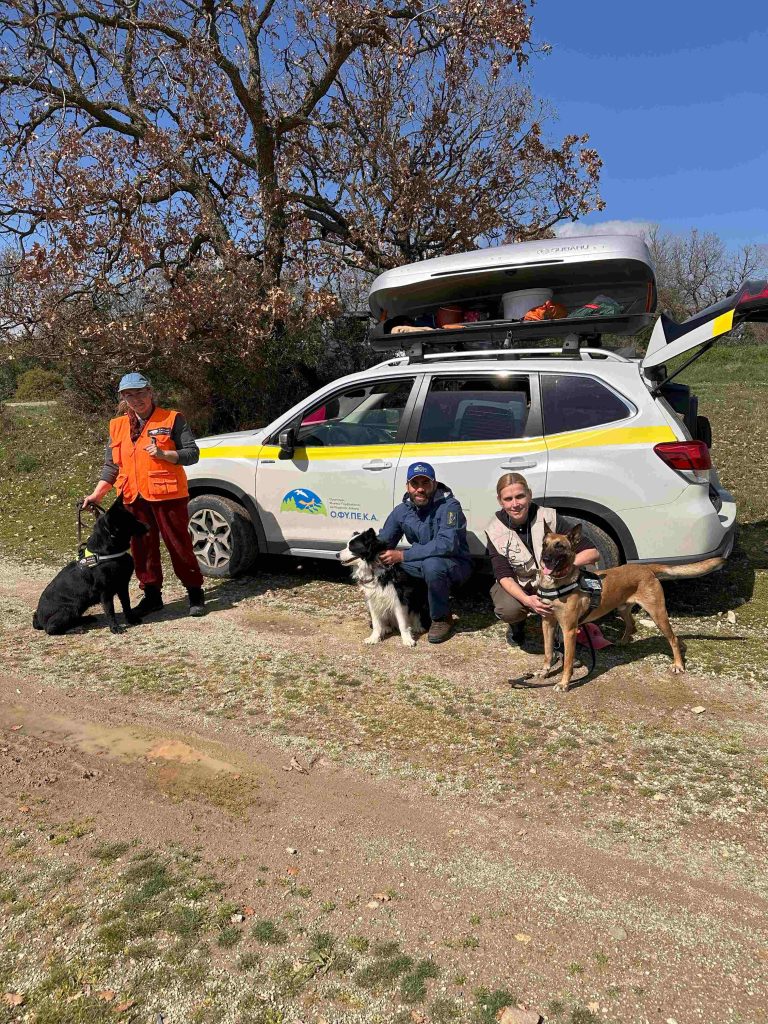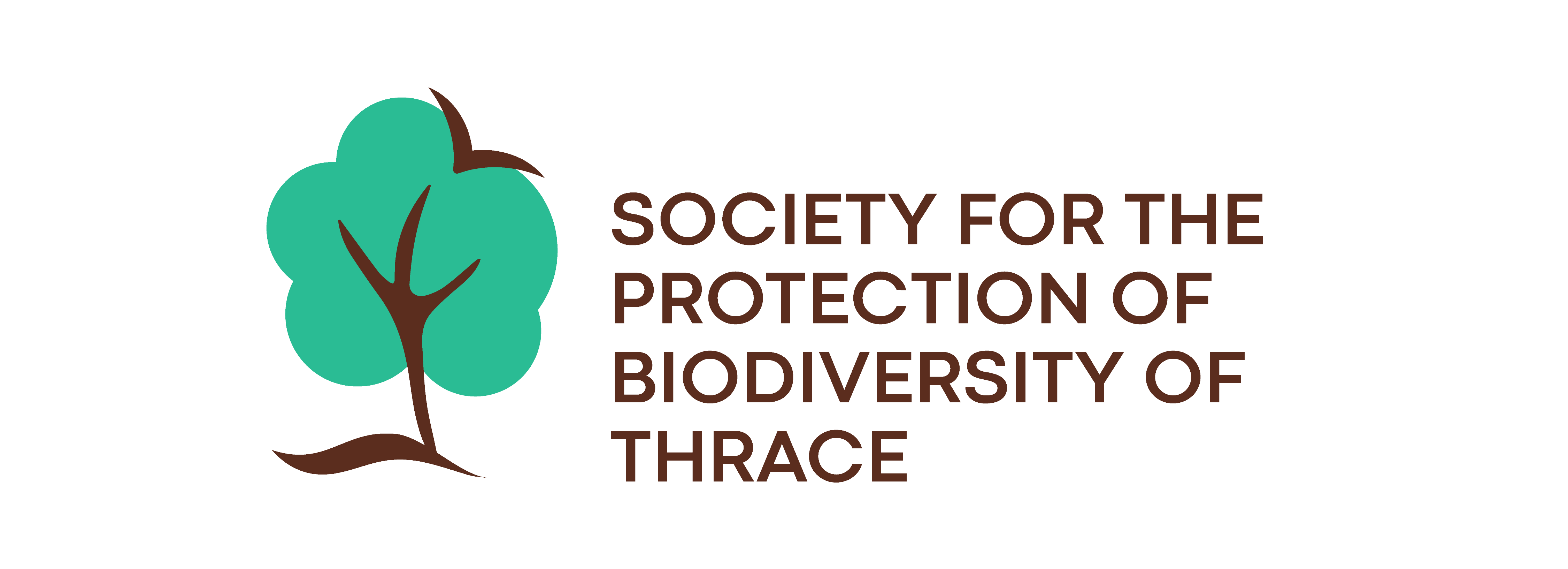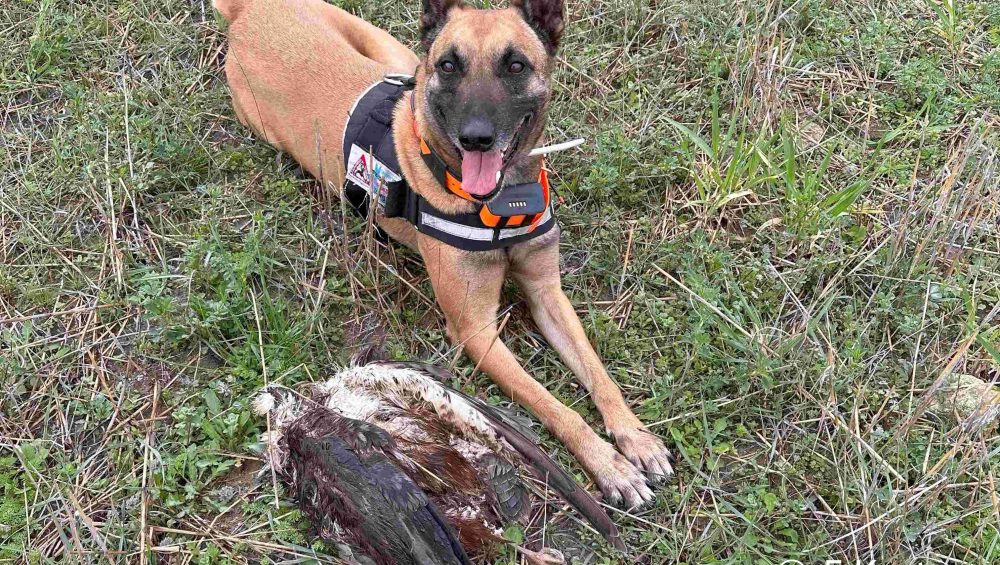Mass poisoning of protected species: a new environmental crime in Evros

A very serious incident is added to the long list of incidents of illegal use of poisoned baits that kill an immense number of animals every year in the Greek countryside, this time with a record number of poisoned animals.
In this case, and for the umpteenth time, the long-suffering wildlife of Evros was confronted with the illegal use of poisoned baits, in the area between Feres and Ardanio, only a few kilometers from the National Park of Dadia-Lefkimi-Soufli Forest and the Special Protection Area of the Natura 2000 network "Notio Dasiko Symplegma".
47 dead animals and one Egyptian vulture that escaped
During the middle to the end of March 2024 and for 10 days, a titanic effort was made to locate and collect every poisoned animal after one unprecedented mobilization from 3 three Anti poison dog units, one of the Society for the Protection of Biodiversity of Thrace (SPBT) and two of the N.E.C.C.A. (Central Macedonia and Management Unit of Nestos – Vistonida and Rodopi National Parks). In the presence of the Forestry Department of Alexandroupolis, staff of the Management Unit of the Evros Delta and Dadia National Parks and the Vice Municipality of Feres, the dogs scanned an area of about 5 square kilometers, making routes of a total length of 120 km and 47 dead animals were found:
- 18 western marsh harriers
- 14 jackals
- 4 foxes
- 3 common buzzards
- 2 dogs
- 1 barn owl (Tyto alba)
- 5 mammals that could not be identified due to the advanced rotting (jackal or fox)
During the last day of the field work, an Egyptian Vulture, a scavenger species, strictly protected in our country, was observed over the area, which potentially could be fallen victim to poisoning if the dead animals had not been collected the previous days.
Most of the animals found were in advanced stages of decay, but some of them were freshly poisoned, indicating that the poisoned animals had remained in the area for a long time and continued to be a source of poisoning for subsequent animals.
Investigation into the illegal use of bait
This incident occurred in close proximity to to the killing of two golden eagles, a western marsh harrier and a jackal a few days before Christmas, which leads us to the conclusion that the timing of the illegal use of bait in this area probably coincided. Of the above incidents, one was detected due to a transmitter carried by a golden eagle, while the other was not detected and developed into a mass poisoning.
The investigation of the incident was undertaken by the competent forestry service of Alexandroupolis, which is conducting the criminal investigation, in cooperation with the competent Directorate of Agricultural Economy and Veterinary Evros, which sent the samples for toxicological analysis, in accordance with the procedures provided by law.
The illegal use of poisoned baits in the countryside is unfortunately very common. Characteristically, two days after the completion of the investigations in Feres, a cinereous vulture was tracked down dead from poisoned bait in the mountains of Nea Santa in Rhodope due to a transmitter it was carrying.
«The huge extent of the Feres incident proves the need for immediate notification of the competent authorities in case someone perceives the existence of poisoned bait or animal in order to avoid this chain of poisoning» as stated by Mrs. Elizabeth Kret, operator of the Special Unit for the Detection of Poisoned Baits of the Society for the Protection of Biodiversity of Thrace. And adds that «key role is played by the effective implementation of the Joint Ministerial Decision on “Measures and procedures for the control of illegal use of poisoned baits in wildlife- Coordination of relevant services and agencies” as well as the strengthening of the protection of the countryside by the competent bodies, which in recent years is inadequate due to understaffing». as stated by Mrs. Elizabeth Kret, operator of the Special Unit for the Detection of Poisoned Baits of the Society for the Protection of Biodiversity of Thrace. And adds that «key role is played by the effective implementation of the Joint Ministerial Decision on “Measures and procedures for the control of illegal use of poisoned baits in wildlife- Coordination of relevant services and agencies” as well as the strengthening of the protection of the countryside by the competent bodies, which in recent years is inadequate due to understaffing».
Notes:
Society for the Protection of Biodiversity of Thrace
It is an environmental organization active in the region of Thrace, focusing mainly on the mountainous and semi-mountainous areas of Evros and Rodopi. Its main objectives are the protection of Thracian nature, with emphasis on birds of prey as indicators of good biodiversity status, and the conservation of their habitats, the stimulation of the rural economy and the reduction of abandonment, especially by young people. Its actions are based on the harmonious coexistence of man and nature.
Anti-poison dog units
The use of poisoned baits is illegal and punishable by law and its impact on wildlife is incalculable. To tackle this illegal activity in the countryside, Greece has 12 anti poison dog units, with the first two having been launched in 2014 by the Hellenic Ornithological Society and WWF Greece, whose effective operation has paved the way for creation of other units. Today there are 1 unit in Thrace by the Society for the Protection of Biodiversity of Thrace, 7 units (in Western Macedonia and Thrace, in Olympus, in Central Macedonia, in North Pindos, in Thessaly, in South Peloponnese, in West Ventral Greece) by N.E.C.C.A., 1 unit in Western Macedonia by the Hellenic Ornithological Society, 3 units in Crete and Rhodes by the First Hunting Federation of Crete-Dodecanese.
If you find poisoned bait or a poisoned animal
If you find poisoned baits in the field or a dead animal, it is very important not to touch or move them, as the poison is hazardous to health and the dead animal can also be a carrier of some diseases.
You should immediately call the competent services (local Forestry Service, Police, Vet Service, N.E.C.C.A.) to come to the site, collect the poisoned animals and carry out an on-site investigation. You can also call Society for the Protection of Biodiversity of Thrace which will inform the relevant authorities and will come to the site with the trained dog-detector and his operator in order to search for further poisoned baits and clean up the territory so that other animals could be saved, whether they are wild or domestic.
J.M.D “Measures and procedures to control the illegal use of poison baits on wildlife species- Coordination of relevant services and agencies”
Κ.Υ.Α. υπ’ αριθμ. Υ.Π.ΕΝ./ΔΔΔ/83415/2715 της 22 Αυγούστου 2022, ΦΕΚ 4459 Β’
